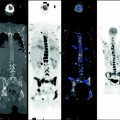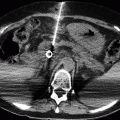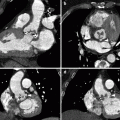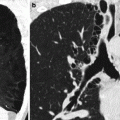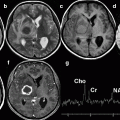Fig. 4.1
Vertebral fractures in osteoporotic patients. (a) X-ray examination shows the deformation of the vertebral body, with a reduction in height of the front wall. It is also possible to identify the fracture indicated by two black arrows. (b) Sagittal T1-weighted image shows the fracture as a hypointense line (black arrow). (c) T2-weighted fat-saturated image shows the fracture line (white arrow)surrounded by intense edema
Traditional radiology is usually sufficient to diagnose and characterize vertebral deformations. Alterations of the trabecular texture can be identified when the mineral component is reduced by 30–40 %. Initially, the cortical structure is increased, in part due to its later resorption compared to the spongious part and in part because the vertebral end plates tend to undergo reactive sclerosis. The earlier resorption of horizontal trabeculae explains the more marked pattern of vertical trabeculae, which appear as radiopaque bands.
In later stages, the trabecular structure can become completely radiotransparent, causing the typical picture-frame aspect. Radiology can help to distinguish between metabolism-related and traumatic crush injuries: a break in the cortical component, with eventual mesh-related phenomena, suggests a post-traumatic lesion.
Traditional radiology is not the only source of qualitative information about the vertebral status; indeed, vertebral radiological or morphometric absorptiometry can overcome some of the limits of radiology by assessing objective parameters. The analysis measures the vertebral height at the level of anterior, center, and posterior walls. The analysis also calculates vertebral height ratios; a diagnosis of fracture is suggested by a reduction of a vertebral height beyond a certain threshold. This allows identification of small fractures that are asymptomatic most of the time and provides an advantage for the patient, as it may suggest therapy to prevent further and more severe deformations. According to current regulations, use of alendronate and other drugs provided by the Italian National Health System is allowed only in ascertained fracture cases.
CT is also a useful source of information when analyzing vertebral fractures. It is possible to recognize in the vertebral body sclerotic, lytic, and mixed alterations. Interruption of the cortical bone is well detected by means of CT multiplanar reconstruction (Cammisa et al. 1991).
CT is more accurate than traditional radiology for determining the age of a vertebral collapse, an important issue in treatment, as it allows some correlation of the lesion to the reported symptoms. The key elements are both the patient’s medical history and the sclerotic component of the collapsed vertebral body, which is a reactive response after a fracture as an effort to heal and to give the vertebra more stability.
MRI has a key role in integrated diagnostic imaging of pathological, usually metastatic, fractures. Metastases can spread to any of the vertebrae, although the dorsal vertebrae are most affected, while osteoporosis fractures show typical sites and are rare above D7. While insufficiency fractures are limited to the vertebral body, pathological fractures often affect pedicles: it is possible to investigate this aspect by radiography, CT, or MRI. In the anteroposterior projection, as well as the coronal projection, the metastatic vertebra can appear deformed on a single side, which is another distinctive feature; moreover, another feature typical of the neoplasia is the intraosseous mass associated with the fracture.
MRI, although less accurate than CT in bone observation, allows analysis of the bone signal, which is of highly important diagnostic value. On T1-weighted images, recent insufficiency fractures usually show a horizontal band-like low signal intensity under the upper end plate; in contrast, during the chronic phase, the signal tends to become isointense with respect to other vertebrae with, occasionally, a thin hypointense band. Pathological fractures are usually homogeneously hypointense when the bone marrow is totally replaced, while in cases of focal marrow replacement, it is possible to observe a particularly intense contrast between tumor hypointensity and bone marrow high signal.
Stay updated, free articles. Join our Telegram channel

Full access? Get Clinical Tree


